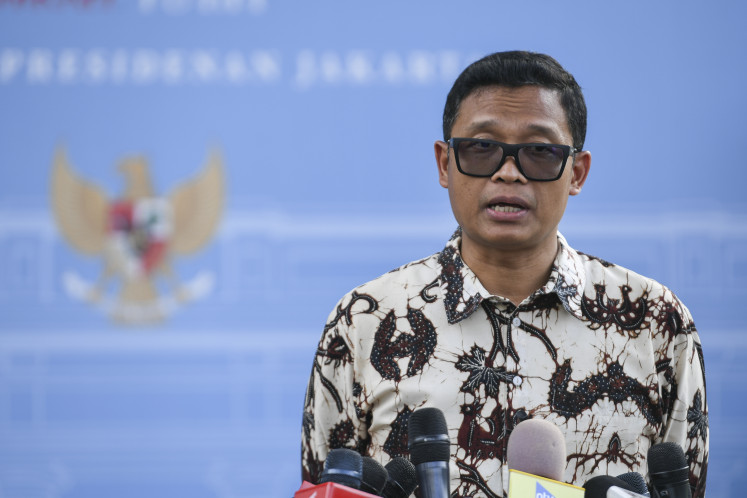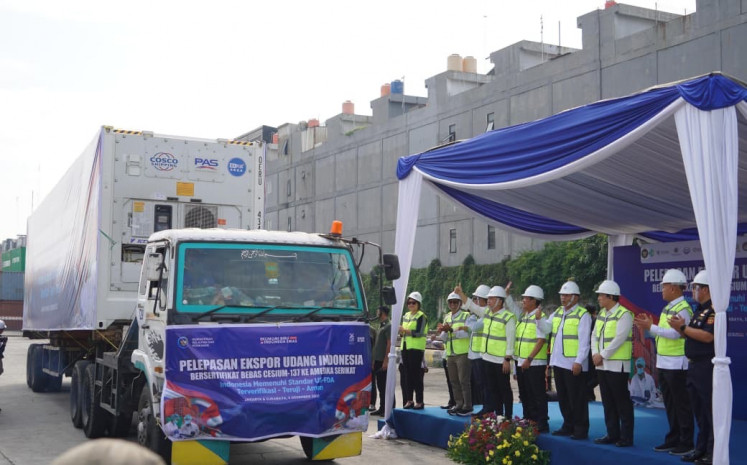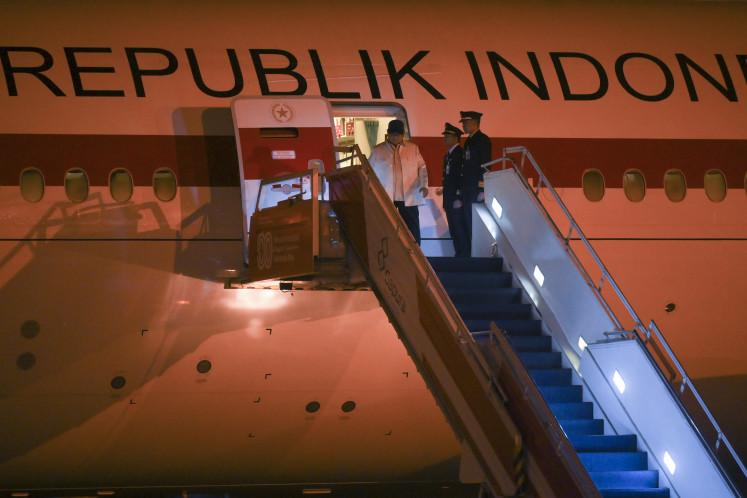Popular Reads
Top Results
Can't find what you're looking for?
View all search resultsPopular Reads
Top Results
Can't find what you're looking for?
View all search resultsJump-starting Indonesia’s credit cycle
As of September, credit expanded by only 7.7 percent year-on-year, or only 4.3 percent year-to-date.
Change text size
Gift Premium Articles
to Anyone
I
ndonesia has experienced several rapid credit cycles driven by both global and domestic factors. The post-pandemic recovery and the commodity boom during the Russia-Ukraine war fueled a strong rebound in lending activity, particularly in 2022 and 2024. Credit growth reached 11.4 percent in 2022 and remained robust at 10.4 percent in 2024, reflecting the combined impact of improved business confidence, high export earnings and ample liquidity.
However, this year the economy has faced a more challenging environment as global uncertainties escalate amid the tariff war initiated by the United States. Domestic factors have also contributed to the slowdown in credit growth.
As of September, credit expanded by only 7.7 percent year-on-year, or only 4.3 percent year-to-date. Despite moderating inflation and improving confidence, both corporations and households remain cautious, leading to weaker-than-expected borrowing activity.
Part of this reflects global dynamics. The late rate cut cycle in advanced economies, particularly in the US, has created a cautious mood across emerging markets. Global liquidity remains tight, volatility has increased and risk premiums have widened. These dynamics have not only pushed up global borrowing costs but also curbed foreign investment appetite toward emerging markets.
Domestically, the story is equally complex. Declining confidence has led many Indonesian corporations to delay investment expansion or rely on internal cash rather than bank financing. While balance sheets are generally healthy, business leaders remain wary about the uncertain global trade environment, declining foreign investment and the slowing down of domestic economic activities.
The global impact has been particularly felt in sectors directly exposed to external demand, such as export-oriented manufacturing. The number of layoffs in this sector increased during the first few months of the year, weighing on consumer sentiment and leading to a decline in household confidence. This, in turn, contributed to the slowdown in household spending.
At the same time, liquidity conditions tightened in the first half of the year due to capital outflows, weaker foreign investment inflows and delays in government spending. These developments prompted banks to maintain a cautious stance, focusing credit expansion on sectors with stronger asset quality.
As a result, recent credit growth has been largely driven by the corporate segment, while lending to retail and micro, small and medium enterprise (MSME) borrowers has expanded at a much slower pace. The economic slowdown has had a more pronounced impact on the retail and MSME segments, as reflected in the deterioration of asset quality within some of these portfolios.
Accommodative policies to spur credit
Sensing the need for stronger credit growth, Bank Indonesia (BI) has recently put a greater focus on a pro-growth stance. This year, the central bank has lowered the benchmark BI Rate four times to 4.75 percent. BI also continues to roll-out macroprudential incentives that reward banks with a cut in the Reserve Requirement Ratio for lending to priority sectors such as housing, green projects and MSMEs.
To complement the monetary push, the government has accelerated fiscal spending through announcing four economic stimulus packages and has adopted a more flexible liquidity strategy. One of the boldest moves came with the placement of up to Rp 200 trillion (US$12 billion) from the government’s excess cash balance (SAL) into the banking system.
This transfer of idle funds from BI to commercial banks aims to reduce funding costs and improve liquidity. By injecting government cash directly into banks, the Finance Ministry hopes to encourage banks to channel cheaper credit to businesses and consumers.
Impact on liquidity has been positive, by September, the loan-to-deposit ratio had declined to 84 percent, down from the range of 86-88 percent in the first eight months of the year. Deposits rose faster than loans in August-September, indicating that banks have the funds, but not yet the confidence, to lend more aggressively.
Fiscal policy is also working on the demand side. The government recently launched a stimulus package combining cash assistance, internship programs and infrastructure disbursements, all of which are expected to boost consumer spending and loan demand. Yet, officials acknowledge that monetary easing and fiscal acceleration may take time to feed into the credit market.
Yet, despite these interventions, lending rates remain stubbornly high, limiting the effectiveness of the easing cycle. There are several reasons for this stickiness. Competition for deposits is still intense. Retail and institutional depositors still demand high returns, especially as alternative investment products offer attractive yields. On the other hand, risk premiums have risen. Banks remain selective, especially toward MSMEs and sectors with thin margins.
As a result, while BI’s benchmark rate has fallen 125 basis points (bps) this year, the average bank lending rates remain around 9 percent, or only declining by 15 bps. The disconnect underscores that liquidity alone is not enough. Improving risk perception and restoring confidence also matter.
Improving confidence is key
After a tough and challenging year, there are reasons for optimism as we head toward 2026. Global sentiment is expected to recover, even though uncertainty remains while markets await progress in trade negotiations, particularly between the US and China. Nonetheless, the declining trend in global interest rates should pave the way for a gradual economic rebound.
For Indonesia, with the government accelerating budget disbursement and adopting more accommodative policies to support liquidity recovery, these efforts are likely to strengthen credit and overall growth, going forward. Yet, Indonesia’s main challenge is no longer about liquidity. It is about ensuring that the liquidity translates into real economic activity.
Jump-starting the credit cycle requires something deeper: Confidence.
Improving confidence will depend on the consistency of policy coordination and clear communication between authorities. The real test will be whether corporations and households believe the recovery is sustainable enough to justify new borrowing. If confidence returns and credit growth follows, 2026 could mark the beginning of a new expansion phase. One driven not by stimulus alone, but by renewed trust in Indonesia’s long-term economic story.
*****
The writer is a senior economist at Bank Mandiri.











